The 2025 Asia Pacific Workshop on Data Science and Information Theory (APWDSIT2025) was held in Shenzhen from October 20 to 23, 2025. It was jointly hosted by Tsinghua Shenzhen International Graduate School (Tsinghua SIGS), with co-organizers CHASPARK, CIE Information Theory Society and IEEE Information Theory Society Guangzhou Chapter.
The workshop was co-chaired by Shao-Lun Huang, tenured associate professor at Tsinghua Shenzhen International Graduate School, I-Hsiang Wang, professor of Electrical Engineering at National Taiwan University, and Parastoo Sadeghi, professor of the University of New South Wales. Sponsored by IEEE Information Theory Society and Huawei Technologies Co., Ltd., the workshop attracted the participation of more than 80 experts, scholars and students in the field of information theory from more than 6 countries and regions in the Asia Pacific region.Livestreams of the four-day event also attracted 7822 viewers onChaspark website and social media platforms.
The workshop received 26 submissions. After a strict review procedure, 21 papers were accepted, with an acceptance rate of 80.77%. The workshop lasted for four days, including 4 tutorials, 13 invitedtalks, 18 academic paper reports, the Lunch Event: Huawei Event, and the Lunch Event: Meet with IT Leadership.
In the morning of October 20, general co-chair Shao-Lun Huang delivered opening speeches for this workshop.
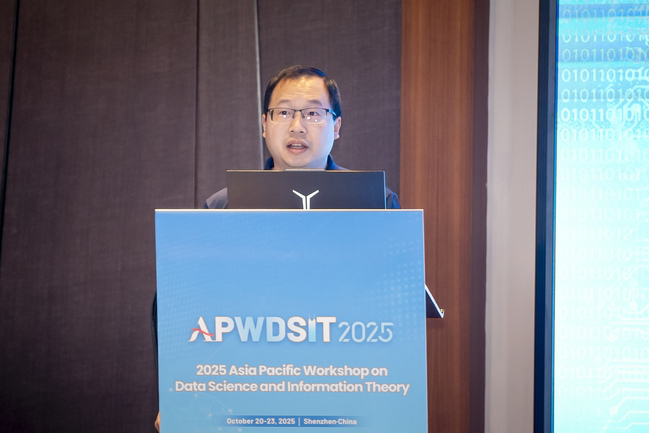
Tenured associate professor Shao-Lun Huang hosted the opening ceremony and delivered a welcome speech
On October 20th and 21st, as well as the 23rd, four tutorials were held, focusing on topics such as semantic information theory, coding for distributed storage, information-theoretic cryptography, and advanced polar coding.
On semantic communication, professor Wenyi Zhang from University of Science and Technology of China discussed the information theory of semantic communication in depth. His talk showcased the application of the rate-distortion theory in framework establishing for semantic communication.
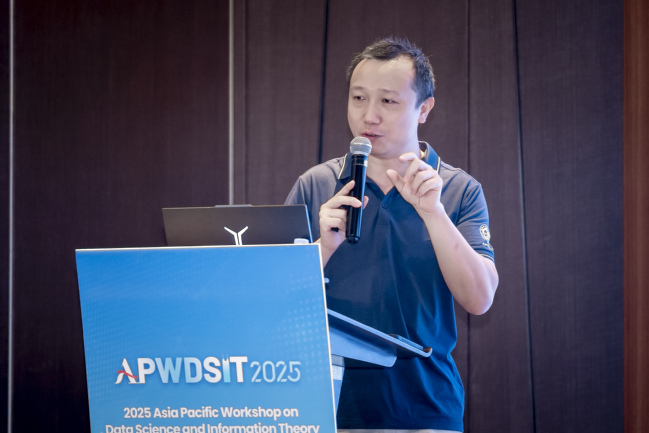
Wenyi Zhang gives tutorial
Three invited talks were later given on semantic communication. Dr. Xueyan Niu, a Principal Engineer from Huawei Technologies Co., Ltd. discuss the rate-distortion-perception trade-off in information theory, application of generative models, Transformer memory capacity, and information theoretic interpretation of key mechanisms such as prompt compression and knowledge editing of LLMs.
Professor Jun Chen from McMaster University explores the problem of channel-aware optimal transport, where a block of i.i.d. random variables is transmitted through a memoryless channel to generate another block of i.i.d. random variables with a prescribed marginal distribution such that the end-to-end distortion is minimized.
Professor Wai Ho MOW from the Hong Kong University of Science and Technology delivered a talk on short linear codes with nearly optimal asymptotic frame error rate, giving a brief overview of the short linear codes asymptotic frame error rate (AFER) optimality.
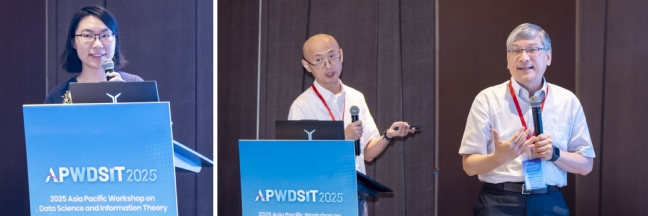
Xueyan Niu, Jun Chen, Wai Ho MOW give invited talks
Duringthe Lunch Event: Huawei Event held at noon on October 20, Dr. Tingyi Wu, an expert from Huawei Technologies Co., Ltd., presented some interesting information theory-related issues from Huawei's products, as well as cutting-edge algorithms, theories, and technologies developed to address theseissues.
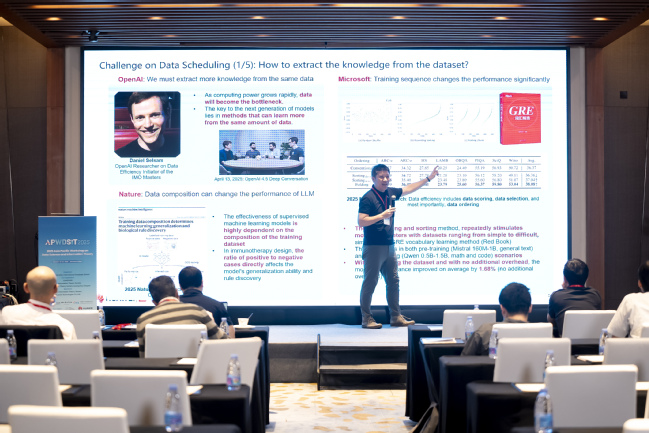
Dr. Wu Tingyi gives the report
In the afternoon of October 20, Dr.Jie Li, senior researcher of Huawei Technologies Co., Ltd., provided a comprehensive overview of the evolution of coding techniques in distributed storage systems.
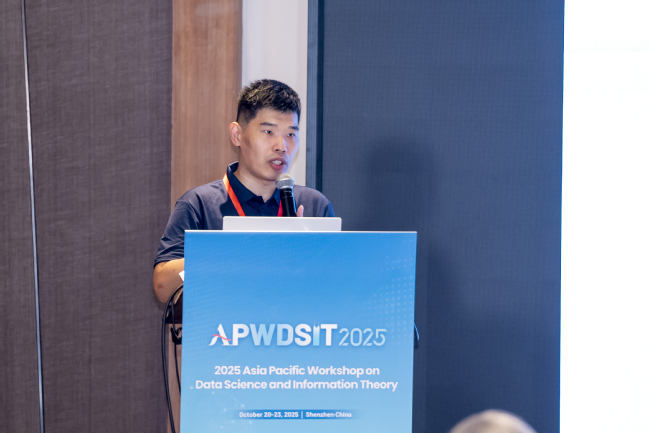
Jie Li gives tutorial
On the morning of October 21, Shun Watanabe, associate professor of Tokyo University of Agriculture and Technology gave a tutorial, in which he introduced the field of information-theoretic cryptography, particularly focusing on how correlated resources shared among the parties enable us to build information theoretically secure protocols. Along the way, a few technical tools such as the universal hash family and leftover hash lemma were demonstrated to be used for that purpose.
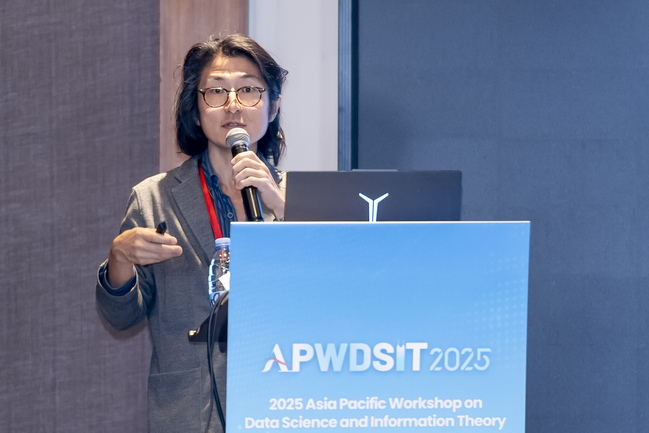
Shun Watanabe gives tutorial
Three invited talks were given on information theory and cryptography. Vinod M. Prabhakaran, associate professor from Tata Institute of Fundamental Research, India, stated that the availability of correlated observations (i.e., a source model) at the generals helps to solve the Byzantine Generals Problem and Byzantine distributed function computation problem.
Professor Mitsugu Iwamoto from the University of Electro-Communications revisited the topic of information-theoretic security to discuss why Shannon defined information-theoretic security in terms of statistical independence and how this concept evolved into various forms that naturally connect to computational security.
Amin Gohari, Vice-Chancellor Associate Professor of the Chinese University of Hong Kong, shared his work on the source model key agreement problem involving two legitimate parties and an eavesdropper who observes n i.i.d. samples of three random variables, respectively, focusing on one of the simplest instances where the key capacity remains open.

Vinod M. Prabhakaran, Mitsugu Iwamoto and Amin Gohari give invited talks
The lunch event "Meet with IT Leadership" held at noon on October 21 saw representatives from the Information Theory Society of Chinese Institute of Electronics and the Guangzhou, Taipei, and Hong Kong chapters of the IEEE Information Theory Society introducing the founding history, organizational structure, past activities, and upcoming events of their respective chapters.
On the afternoon of October 21, professor Dong Liu from the University of Science and Technology of China gave his talk on a deep learning solution to the rate-distortion bounds of image compression by considering the practical constraints and assumptions involved and quantitatively analyzation, e.g., estimating the bounds of the rate–distortion function.

Dong Liu gives invited talk
On the morning of October 22, three invited talks were given on communication and coding. Yongjune Kim, associate professor from Pohang University of Science and Technology presented his work on a novel Cross-Attention Message-Passing Transformer (CrossMPT) improving decoding performance while significantly reducing memory usage, computational complexity, inference time, and training time.
Tao Guo, associate professor from Southeast University, showed the findings on the information-theoretic limits in rate-distortion theory for multi-user semantic compression.
Professor Kai Niu from Beijing University of Posts and Telecommunications discussed over semantic information theory and method, introducing the fundamental characteristics of semantic information, overviewed the basic theory framework, and presented the system framework based on synonymous mapping and typical results of semantic encoding and transmission.
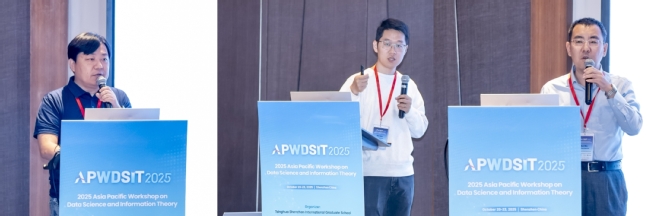
Yongjune Kim,Tao Guo and Kai Niu give invited talks
On the morning of October 23, Dr. Huazi Zhang, a research engineer of Huawei Technologies Co., Ltd. delivered a tutorial highlighting key breakthroughs in polar coding over the last decade. In this tutorial, he showed that polar codes, once limited to short messages, are competitive for large data blocks in the low-complexity regime.
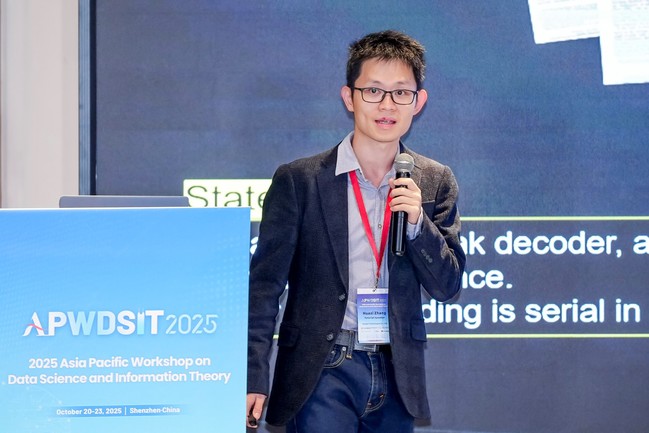
Huazi Zhang gives tutorial
Three invited talks were given on coding. Xuan He, associate professor from Southwest Jiaotong University, examined the Hardware-friendly high-performance low-density parity-check (LDPC) decoding schemes along three dimensions: scheduling scheme design, variable node (VN) update optimization, and check node (CN) update realization.
Postdoctoral fellow Qianfan Wang from City University of Hong Kong introduced Guessing decoding as a unifying approach for ultra-reliable, low-latency links at short blocklengths, especially focusing on two leading families: GRAND and GCD.
Ling Liu, associate professor from Xidian University (Guangzhou), discussed how to enhance the decoding performance of polar codes in the presence of feedback with a brief review of the classic SK coding, introduction of feedback-based polar coding schemes, and establishment of their connection with lossless compression.
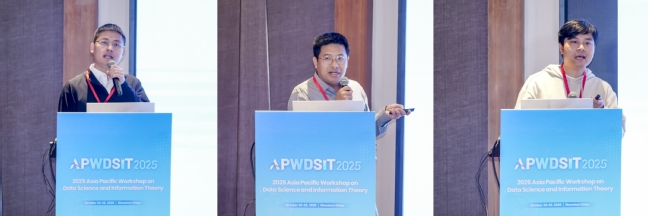
Xuan He, Qianfan Wang and Ling Liu give invited talks
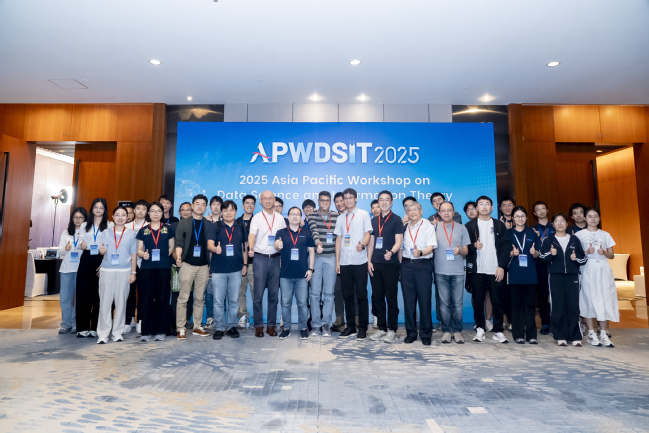
Group photo
Source: Institue of Data and Information
Edited by Chen Jundou
Reviewed by Lin Zhoulu


